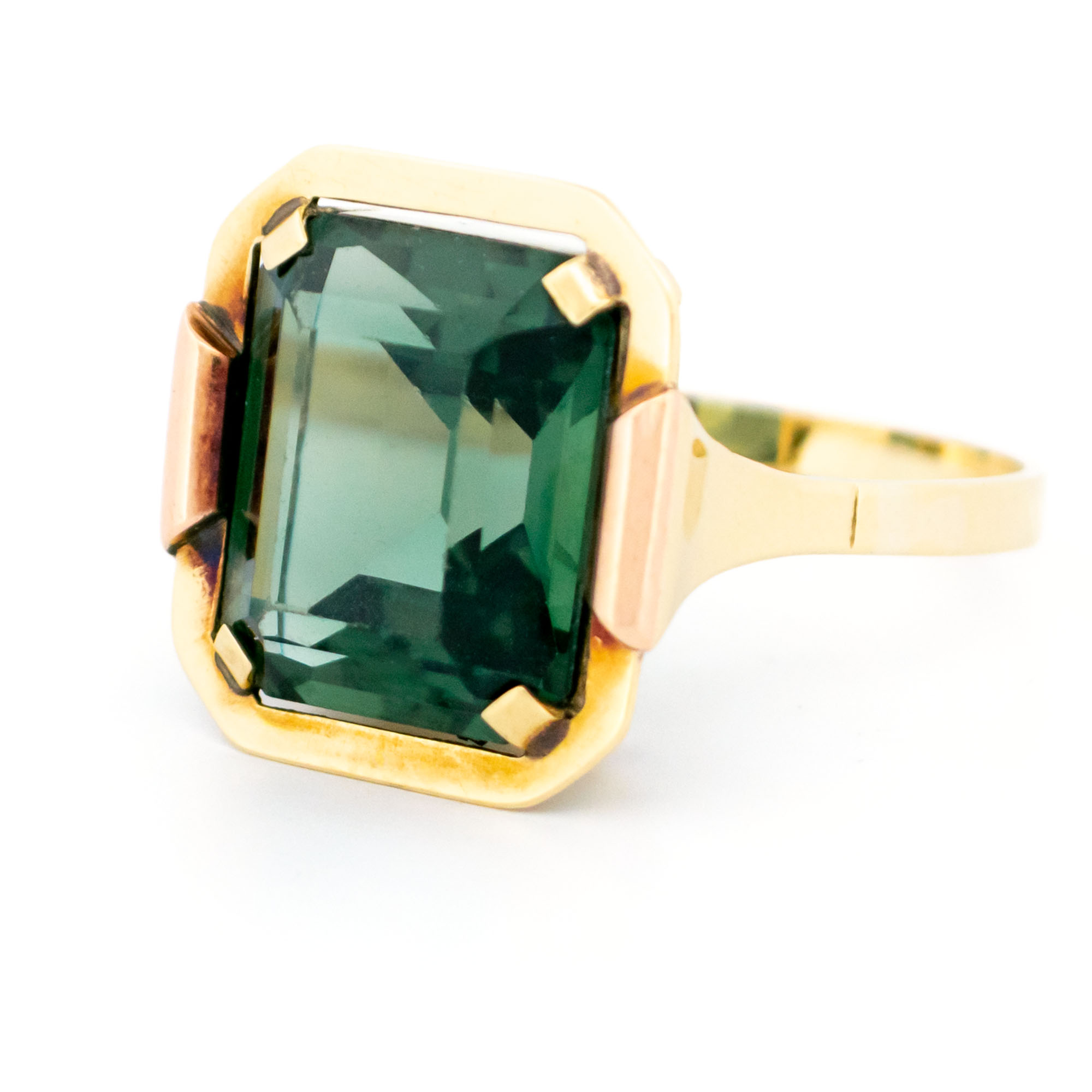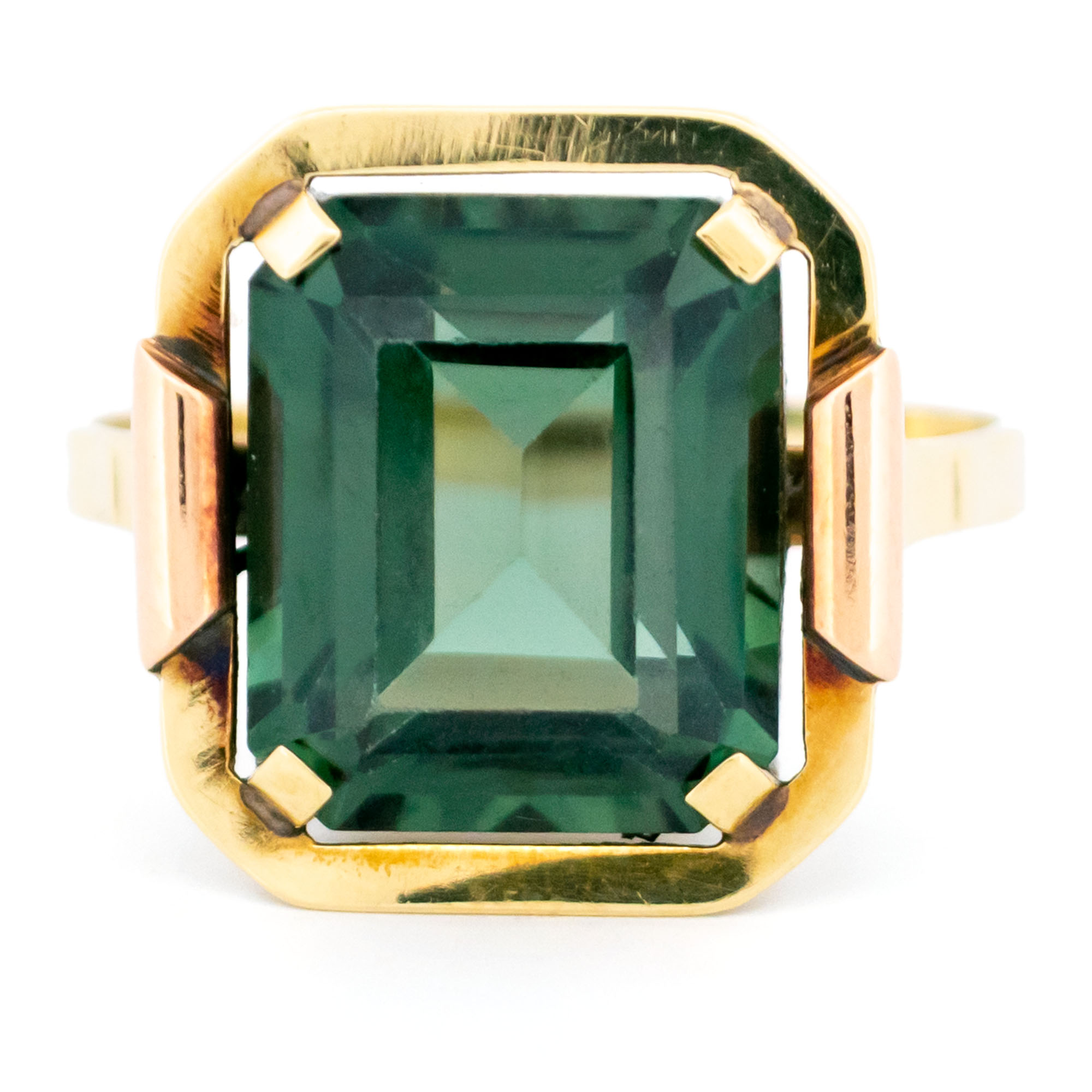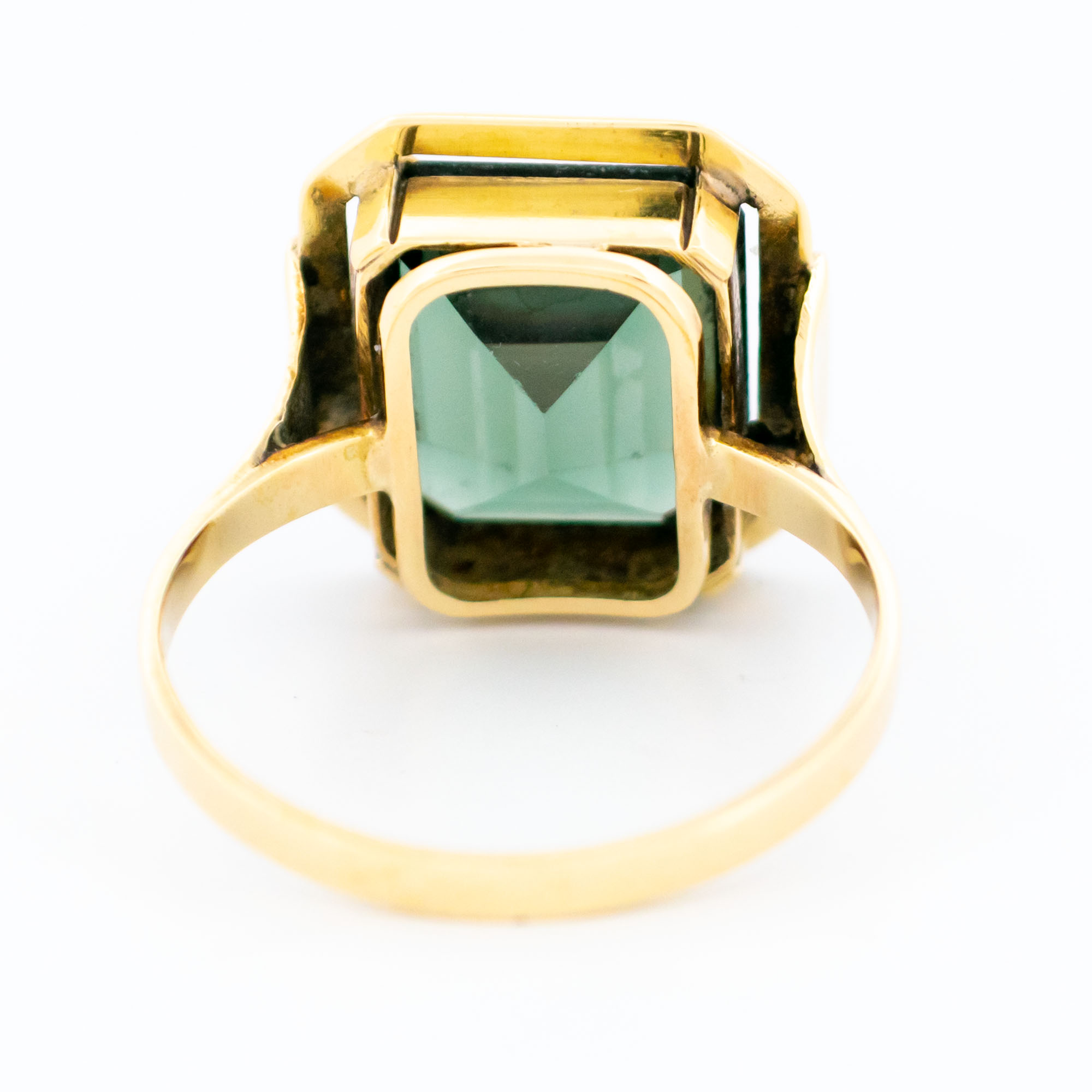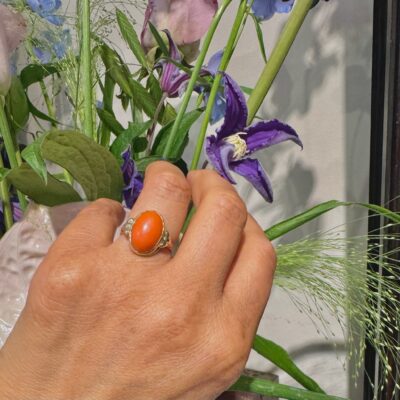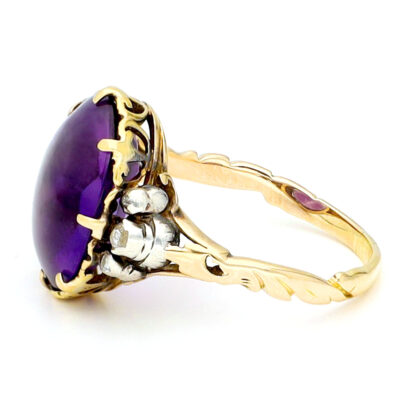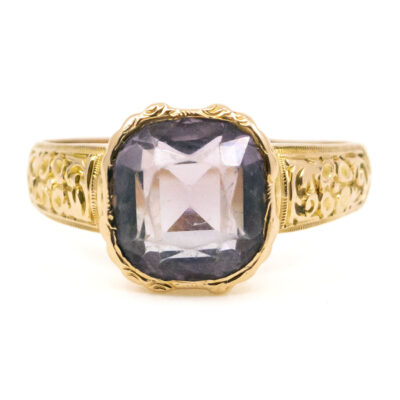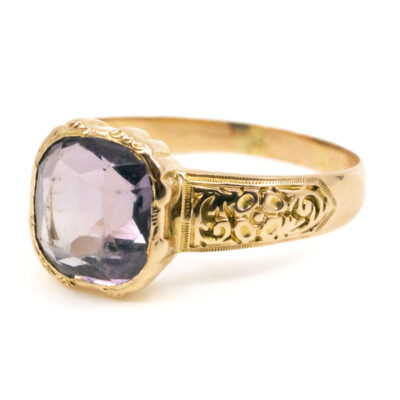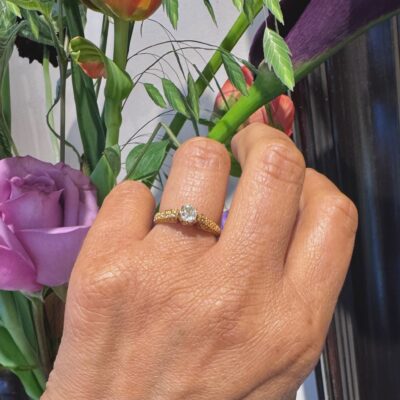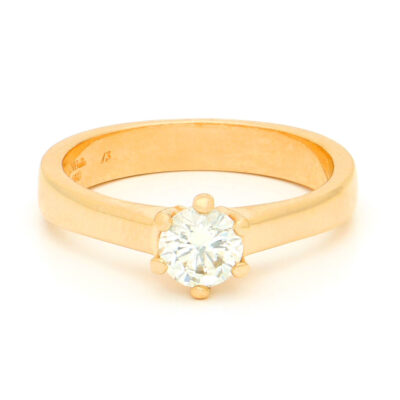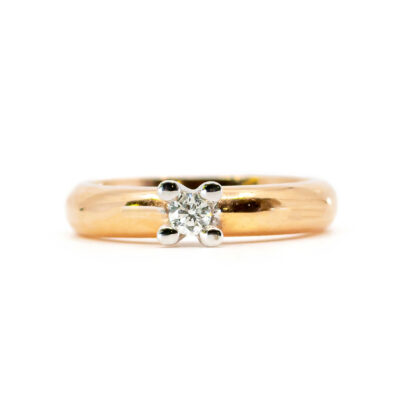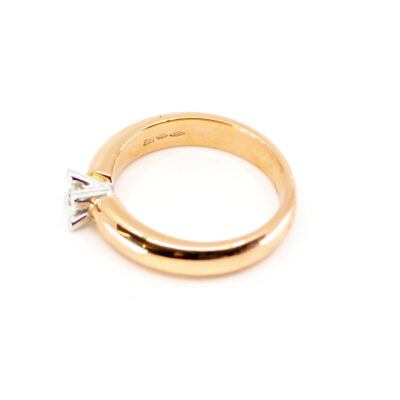Striking and sculptural, this mid-century ring by W. Been (Amsterdam) features a bold 7.00ct green spinel in an architectural 14k yellow gold setting. A true statement of vintage Dutch design. By W. Been, Amsterdam.
Details: ±7.00ct Spinel, 14k Ring, By W. Been, Amsterdam.
Design Era: Mid 20th Century (1950-1970).
Size: 17.0 NL / 53.75 FR / 6¾ US / N UK, sizeable (Within reason. Contact seller for information).
Weight in grams: 4.
Condition: Very good condition – slightly used with small signs of wear.
This ring, originating from Amsterdam in the 1960s, features a vibrant emerald-cut green spinel set in a striking gold design. During this era, lab-grown spinel was commonly used across Europe due to its durability, vivid color, and affordability — particularly in green, which is very rare in natural form. While we have confirmed that the stone is spinel using a thermal conductivity tester, this method does not distinguish between natural and lab-grown spinel. Given the historical context, design style, and stone characteristics, it is highly likely that the spinel is lab-grown.
Shipping and Pickup: This gorgeous piece ships from our store located in the center of Amsterdam, The Netherlands. We offer both registered shipping and local pickup at our store. In the case of local pickup, any applicable shipping costs will be refunded.
About Us: Add some sparkle to your style with Binenbaum.com. We offer a stunning selection of antique and vintage jewelry that you won’t find anywhere else. From timeless rings and dazzling necklaces to unique brooches, we have something for every taste and occasion. Visit our website today and treat yourself to a piece of history.
| Design Era | |
|---|---|
| Design & Historical Context | The 1950s were a time of great cultural and technological change, marked by the emergence of rock 'n' roll, the birth of the Beat Generation, the launch of Sputnik, and the beginning of the space race. These events, and the knowledge that the world was living in a nuclear age, contributed to the development of an aesthetic known as the Atomic Age, which was reflected in various aspects of design, including jewelry. |
| Key Materials | |
| Materials & Craftsmanship | Spinel: The Gem of Vibrant Color and Resilient Beauty Spinel is a captivating gemstone known for its remarkable range of colors and exceptional brilliance. Often mistaken for other more famous gemstones, such as ruby and sapphire, spinel has long been prized for its vibrant hues, which can range from deep reds and pinks to blues, purples, and even black. This versatile gem is cherished not only for its beauty but also for its durability, making it a favorite among gem collectors and jewelry enthusiasts. Historically, spinel has been used in royal jewelry for centuries, often mistaken for rubies and other precious stones due to its striking resemblance. One of the most famous examples is the Black Prince's Ruby, a large red spinel that sits in the British Imperial State Crown. It wasn't until modern gemology that spinel was recognized as a distinct mineral, separate from the corundum family (which includes ruby and sapphire). In modern jewelry, spinel is highly valued for its vibrant colors and excellent clarity. Spinel's brilliance and range of colors make it an attractive option for those looking for a unique and colorful alternative to more traditional gemstones. With a Mohs hardness of 8, spinel is durable enough for everyday wear, making it suitable for all types of jewelry, including rings, earrings, necklaces, and bracelets. Spinel's rich colors are the result of trace elements present during its formation. For example, red spinel gets its color from chromium, while blue spinel can owe its hue to iron. This variety allows spinel to be used in a wide range of jewelry designs, from classic to contemporary. It is often set in both white and yellow metals, with each setting enhancing different aspects of the stone's color and brilliance. Beyond its aesthetic appeal, spinel is also associated with various metaphysical properties. It is believed to be a stone of revitalization, bringing energy and renewed enthusiasm to the wearer. Spinel is also thought to encourage passion and devotion, making it a meaningful choice for romantic jewelry. Spinel is more than just a gemstone; it is a symbol of strength, vitality, and enduring beauty. Its vibrant colors and resilient nature make it a perfect choice for those who appreciate both the allure of color and the practicality of a durable gemstone. Whether chosen for its historical significance or its dazzling appearance, spinel adds a touch of vibrant elegance to any jewelry collection. 14k: The Durable Choice for Everyday Elegance 14k gold is a popular and practical choice in fine jewelry, known for its durability, affordability, and beautiful color. The 14k signifies that the gold is composed of 58.3% pure gold and 41.7% alloyed metals, such as copper, silver, nickel, or zinc. This combination results in a strong and resilient material that can withstand the rigors of daily wear, making it an ideal option for those seeking both beauty and durability. Historically, gold has always been a symbol of wealth and luxury, and 14k gold strikes a perfect balance between the rich appearance of gold and the strength needed for everyday use. Because of its lower gold content compared to 18k or 24k gold, 14k gold is more affordable, making it a popular choice for a wide range of jewelry pieces. In modern jewelry, 14k gold is appreciated for its versatility and variety. It is available in several colors, each achieved by mixing gold with different metals: Yellow Gold: A classic and timeless choice, 14k yellow gold has a warm, golden hue that complements most skin tones and is well-suited for both modern and traditional designs. White Gold: Created by alloying gold with white metals like nickel or palladium, 14k white gold has a sleek, silver-like appearance. It is often rhodium-plated for added shine and is a popular choice for engagement rings and other contemporary jewelry. Rose Gold: Achieved by mixing gold with copper, 14k rose gold has a soft, pinkish hue that has gained popularity for its romantic and vintage appeal. It is a favorite for those seeking a unique and stylish alternative to traditional gold colors. 14k gold is commonly used in a wide array of jewelry, including rings, necklaces, bracelets, earrings, and watches. Its durability makes it especially suitable for pieces that are worn daily, such as wedding bands and engagement rings, where the balance between strength and beauty is crucial. 14k gold is more than just a practical choice; it is a symbol of enduring style and everyday luxury. Its ability to retain the look of gold while offering greater resistance to scratches and dents makes 14k gold a versatile and timeless option for any jewelry collection. Whether in a simple band or an elaborate design, 14k gold offers a perfect blend of elegance and durability that can be enjoyed for years to come. |
| Size | |
| Gender | |
| Weight (in grams) | 4 |
| Condition | Very good condition – slightly used with small signs of wear |
By following these tips, you can enjoy your precious jewelry for many years to come.
Related Products
-
Coral 14k Solitaire Ring 17197-9131
€ 995,00 VAT incl. (where applicable) -
Emerald 14k Solitaire Ring 14411-8325
€ 1.995,00Original price was: € 1.995,00.€ 1.795,00Current price is: € 1.795,00. VAT incl. (where applicable) -
Amethyst Diamond 14k Solitaire Ring 17983-9374
€ 1.895,00 VAT incl. (where applicable) -
Amethyst 14k Solitaire Ring 10644-1451
€ 1.595,00 VAT incl. (where applicable) -
Diamond 14k Solitaire Ring 231-1351
€ 2.695,00 VAT incl. (where applicable) -
Diamond Spinel 14k Solitaire Ring 17536-9239
€ 2.895,00 VAT incl. (where applicable) -
Diamond 18k Solitaire Ring 17512-9219
€ 2.895,00 VAT incl. (where applicable) -
Diamond 14k Solitaire Ring 10290-6503
€ 1.895,00 VAT incl. (where applicable)
- Home
- Collection
- Fine Jewelry
- Silver Jewelry
- Silverware
- Boxes
- Candlesticks
- Salt and pepper shakers
- Miniatures
- Salt cellars
- Spoon Set
- Condiments
- Frames
- Napkin Ring
- Spoon
- Oddities
- Cups
- Vases
- Cutlery
- Serving Spoon And Cake Server
- Candlesticks
- Baskets
- Hanukkiah
- Spice Tower
- Yad
- Tea Set
- Sugar Castor
- Napkin Rings
- Wine Bottle Coaster
- Wine Stopper
- Tea Pot
- Jugs
- Rattles
- Hip Flask
- Miscellaneous
- Rings 💍
- About
- Contact
- No products in the cart.
